Sunday Dec 15, 2024
Sunday Dec 15, 2024
Wednesday, 6 May 2020 03:05 - - {{hitsCtrl.values.hits}}
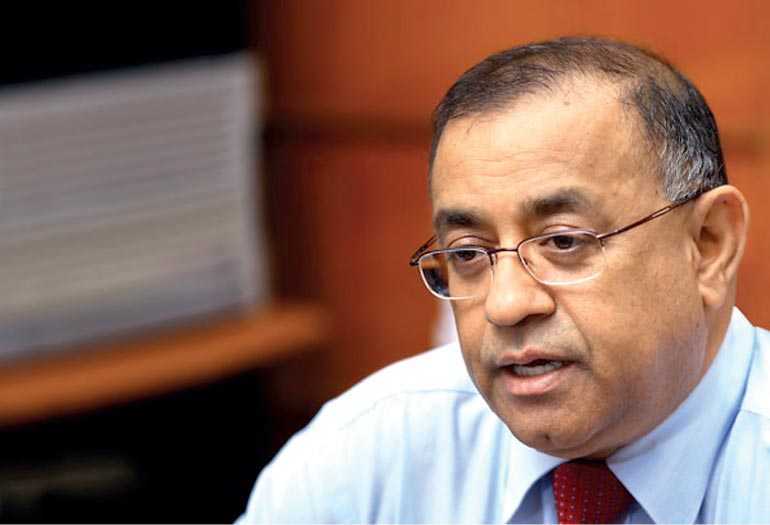
Secretary to the President Dr. P.B. Jayasundera
By Nisthar Cassim
For a Government in transition, and a new administration barely three months old, to be facing the impact of perhaps the worst pandemic in world history can be very unfortunate, apart from being the biggest-ever challenge in Sri Lanka’s history. That is exactly what President Gotabaya Rajapaksa elected on 16 November 2019 and his interim Government and officials have been facing since late January 2020.
The novel coronavirus (COVID-19) was declared a global health emergency on 30 January by the World Health Organisation (WHO); at the time the world had seen only 82 cases of infection and no deaths outside China. Fifteen days later, the WHO declared COVID-19 a global pandemic.
By early this week, the number of infected had risen to over 3.5 million in over 120 countries and territories and killed nearly 250,000 people. In Sri Lanka, the cumulative number of positive cases has crossed the 750 mark, with eight dead and several hundred either suspected of having contracted COVID-19 or in quarantine.
With countries, businesses and communities shut down for weeks – Sri Lanka not being an exception – COVID-19 has given the global economy its biggest jolt. The International Monetary Fund (IMF) forecast a 3% negative growth for the world economy, a calamity more severe than the Great Depression suffered in the 1930s. Sri Lanka’s economy too has been projected to contract by 3% in 2020 by the IMF. Other agencies have painted a more optimistic forecast of 1% contraction, while a few private sector institutions have predicted a 1-1.5% growth as against 2.3% improvement in 2019.
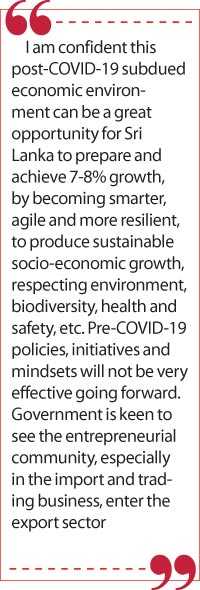 |
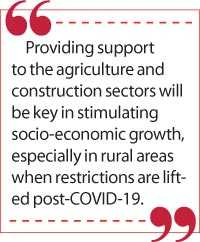 |
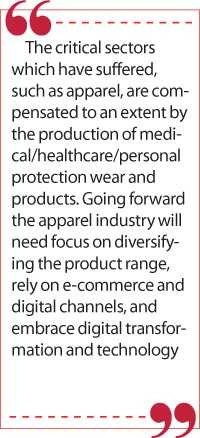 |
 |
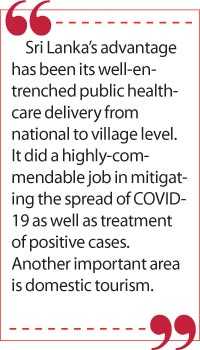 |
 |
With over a month of partial shutdown, the tourism industry coming to a standstill, exports struggling, and stimulus and relief costing billions of rupees, the Gotabaya Rajapaksa administration has been grappling with multiple crises. The Daily FT met with Secretary to the President Dr. P.B. Jayasundera for an exclusive interview to find out how the Government is managing the crisis and what plans are in place to stimulate socio-economic growth amidst the country’s biggest-ever challenge.
In this interview, Dr. Jayasundera, who was previously one of the longstanding Treasury Secretaries, also responded to some of the issues the economy is faced with and concerns of the private sector, as well as key learnings from the COVID-19 pandemic.
Mixed sectoral impact thus far
We are lucky to have the agriculture sector being resilient and largely unaffected by COVID-19. The country just completed a good Maha season and entered the 2020 Yala season. This augurs well for the Government which is championing food security.
Accounting for 7% of GDP, agriculture resilience is critical since it has an overarching impact on reducing poverty and stimulating growth in rural areas. The agriculture sector is also a big contributor to exports. We will be supporting further improvement in agriculture as part of measures aimed at reviving the economy in the post-COVID-19 period.
The construction sector is another thrust sector, especially since it involves a host of Small and Medium-sized Enterprises (SMEs) and entrepreneurs in rural areas. They are engaged in the development of access roads and feeder roads. This sector is also critical in absorbing the unskilled or semi-skilled daily wage earners back into productive employment and earn livelihoods. There are several projects identified in the public investment program including socio-economic infrastructure and utilities.
If needed, we can ensure self-quarantine arrangements within the construction site itself when activities resume as curfew restrictions are eased.
It is my strong belief that providing support to the agriculture and construction sectors will be key in stimulating socio-economic growth, especially in rural areas.
Traditionally, April has been a holiday month for most sectors on account of the Sinhala and Tamil New Year, hence the impact from the partial shutdown has been less. Perhaps it is the tourism sector which has been impacted the most in the immediate sense because of COVID-19.
The third immediate focus is on the smallholder plantations. The Government is keen to resume activities on a broader scale whilst the tea smallholders have been operational, thankfully. Apart from tea, the smallholder sector also has huge export potential when it comes to cinnamon and spices.
In terms of industries, with the planned resumption and envisaged revival in construction activities, some of the supply/raw material industries such as cement and steel will be able to improve their capacity utilisation. In fact, what we heard from some in the private sector is that the temporary shutdown enabled them to better manage their capacity issues. We will place an aggressive focus on the processing industries and other supply chain industries.
The service sector which accounts for over 55% of the economy has been resilient as well. The supply of electricity and telecommunication has remained buoyant. Electricity supply has and will be enjoying low costs given the drop in oil prices. Future prices of fertiliser and select building materials such as bitumen will come down as well.
I don’t expect serious disruption for some time, whilst full-scale operations of maximum capacity may not be required in some of the industrial sectors. The feedback we are receiving is that the present capacity is adequate, or that these industries will be at a trimmer level expecting maximisation as the economy rebounds later on.
The COVID-19 pandemic also brought to light the immense potential and effectiveness of e-commerce and online service delivery. We saw very positive developments along with growth, which augurs well for the future, especially in the post-COVID-19 era.
In my view, the traditional brick-and-mortar branch/outlet network and distribution centres have come under fresh review, as products can be delivered to consumers direct. Colombo and townships/centres have lost some of their dominance or relevance due to the shutdown, with traders as well as consumers finding alternatives. Additionally, the small timers and self-employed have chipped in or moved on to home delivery or door-to-door services.
On the other hand, the critical sectors which have suffered, such as apparel, are compensated to an extent by the production of medical/healthcare/personal protection wear and products. Indications are that the world will have to learn to live with COVID-19 for much longer and there will be further demand for these products.
At present the apparel industry is also sourcing more raw material locally, which is a cushion for the textile/fabric producers. Going forward the apparel industry will need to have a greater focus on diversifying its product range. It will also need to rely on ecommerce and digital channels, and embrace digital transformation and technology far greater than it has thus far.
Public service and healthcare sector dynamics
With the onset of the COVID-19 pandemic and resultant mitigation measures, public service and healthcare delivery in Sri Lanka saw a paradigm shift. The public service structure got an opportunity to become more rational.
Sri Lanka’s advantage has been its well-entrenched public healthcare delivery from national to village level. It did a highly commendable job in mitigating the spread of COVID-19, as well as in the treatment of positive cases. Public service showed solidarity in containing the pandemic and efficient delivery despite election laws in operation.
The pandemic also highlighted the need for further investment in sustaining this resilience and continuous improvement, as well as in public safety and health.
Going forward a robust healthcare system will be critical for tourism revival, especially after the world’s experience with COVID-19. Tourists will opt for destinations which have good healthcare and public safety measures. Such positive status will help attract more Foreign Direct Investments (FDIs) as well as boost exports.
Until the unfortunate 2019 Easter Sunday attacks, Sri Lanka had a unique advantage of promoting the destination as safe for tourists. This was important despite the country’s experience with a near-three-decade north-east conflict with terrorism. The fact that no tourist was affected by the war on terror had a huge market value. However, the Easter Sunday attacks disturbed that value proposition/mindset. Going forward, the tourism sector has a new challenge in ensuring health and safety to promote itself as a country that was successful in eliminating the risk of disease.
Leveraging technology: ‘Work from Home’ initiative a success
The COVID-19 pandemic also highlighted the importance of technology in pursing trading opportunities.
For example, the traditional Colombo tea auction was forced to go online/electronic. I am glad the tea industry migrated to the electronic platform, embracing technology. This is a good start by the tea industry in taking a serious look at digital transformation. The e-auctions for tea may trigger greater industry participation, including the SMEs and others, given the low transaction/intermediary cost, high transparency, and opportunity to catalogue specific teas, etc.
Likewise, the traditional sectors, as well as apparel, need to think innovatively and lay greater emphasis on the e-market place, 3D printing technology, etc.
The ‘Work from Home’ initiative has worked very well in the public sector. We need to consolidate and strengthen these early wins. This will also expedite some of the delayed e-delivery service initiatives.
President Got-abaya Rajapaksa since assuming office has engaged with all the different stakeholders in the economy and civil society, as part of an inclusive approach in harnessing widely-available local expertise. I would say much of the progress of the Government has gone online and been technology-driven. This perhaps has made the progress less visible to the public, though felt in terms of efficiency and ease.
Another transformation has been the wide use of e-learning during the COVID-19 mitigation period, bringing a new real-time opportunity in education.
Fiscal management
We will consolidate recent improvements in tax collection and administration. We will seek higher tax compliance with the convenience of online tax payment. This will help the large taxpayer units while also making tax collection more efficient. We need to introduce a culture where the taxpayer is not penalised but consulted if proper returns/assessments are not made.
There is a misconception that fiscal stability can only be achieved via higher tax revenue. This isn’t necessarily true. Fiscal stability can be achieved via reduction in unnecessary or wasteful expenditure as well. The ‘Work from Home’ initiative has enabled a rethink on the possibilities of reducing Government expenditure.
Additionally, the introduction of professional management and boards of directors to State-Owned Enterprises will help improve efficiency and profitability in some of the strategically-important State enterprises, and enhance their contribution to the economy.
Budget 2020
The previous regime, even prior to the elections, was running on net arrears, and the budget deficit was around 6%. If you take the arrears and the additional expenditure, the deficit was around 7-8% in 2019. The higher deficit is a complete reversal of the fiscal consolidation trend/path Sri Lanka has been pursuing.
There were some provisions from the Vote on Account – January to April, and thereafter with support from the Consolidated Fund, the Treasury has paid part of the liabilities, such as the fertiliser subsidy. Since the new Government took office it has been settling the arrears with not much spending on new projects. Debt repayment and recurrent expenditure are continuing. Foreign debt has reduced and been replaced by domestic debt.
Every country is resorting to printing money due to the impact of COVID-19. The Central Bank intervention is unavoidable, but it is reversible as and when economy starts recovering. The 2020 Budget will make provisions and the Central Bank refinancing will be settled. So the 2020 budget deficit will be essentially to settle the arrears of 2019. The budget deficit in 2020 could be 8-9% but it will be with a cleaner and better fiscal outlook.
From 2021 onwards the Government will get back to the fiscal consolidation path. It is unlikely there will be expensive projects, as the country needs to have the fiscal space before that.
In the 2020 Budget, spending on health, education and rural development are critical priorities, along with supporting export development.
We will not crowd out the 2020 Budget by undertaking expensive projects. Previously planned infrastructure projects will be pursued with 100% financing from the contracting company/investors on a turnkey basis. We want the contractors and investors to take some risks to ensure proper costing as well as proper procurement. This will also ease the pressure on fiscal management.
Public investment will not focus on enhancing existing capacity as it is adequate given the setbacks from COVID-19. Existing infrastructure, which has seen huge improvement in recent years, is adequate as well. What we need is improvement in soft infrastructure, such as technology and digital platforms with e-service and delivery.
Debt servicing
We have taken a host of measures to secure global support for Sri Lanka’s medium-term external debt servicing amidst the serious impact of COVID-19.
Debt repayment is the only ongoing payment, despite the difficulties and challenges from the early part of the year, and since the outbreak of COVID-19. Sri Lanka has honoured its debt and will continue to do so. As foreign inflows have come down due to external shocks linked to COVID-19, the Government is using internal resources to retire debt to date.
Our commitment is that Sri Lanka will under no circumstances dishonour debt obligations and our investors’ trust in our financial system. We didn’t default even amidst a full-scale war with terrorists and its economic consequences.
We certainly don’t want to be an Argentina. We want to be a responsible Government and enhance credibility. This is the path we are keen to pursue. However, with the COVID-9 pandemic causing unprecedented social and economic disruptions globally, Sri Lanka has acknowledged the daunting challenge in debt servicing.
When the World Health Organisation (WHO) declared COVID-19 as a pandemic on 15 March, President Gotabaya Rajapaksa requested its Director General Tedros Adhanom to call on developed nations to provide debt relief to poor countries.
We have officially requested all our bilateral and multilateral development partners to favourably consider extending support to Sri Lanka in this hour of need.
From the IMF the Government has asked to replace the current Extended Fund Facility (EFF) with the Rapid Financing Instrument (RFI). The RFI funds will help create fiscal space for essential COVID19-related expenditure and catalyse donor support. Midway through last year the $ 1.5 billion EFF program was off-track, as Sri Lanka failed to meet the underlined conditions. Sri Lanka now has a different policy regime than when the EFF was agreed upon, and in a COVID-19-impacted environment, a program like EFF or structural programs cannot be fulfilled.
We need emergency funding to meet and manage healthcare and social security amidst the COVID-19 crisis, and accrue economic dynamics. That is the logic. Under RFI around $ 800 million worth of support is possible and we are confident the IMF will consider our request favourably.
Similarly, the Government has also asked the World Bank and the Asian Development Bank to reallocate as much as possible from the existing allocation of their three-to-five-year portfolio of Sri Lanka. Such support can help Sri Lanka meet budgetary needs.
For example, additional funds were transferred from an existing World Bank capacity building project with the Central Bank – a $ 25 million project of which $ 15 million was pending – and this was drawn to support the Central Bank refinancing scheme for banks to support COVID-19-hit businesses, SMEs, self-employed individuals and others.
The Government is also talking to bilateral development partners such as Japan, China, EU, US, Canada and India, for a deferment of dues over the next two years.
Most of the investors in Sri Lanka’s ISBs are funds, such as pension and provident funds in the West, and not banks. That is why we hope the EU and US especially will consider our request for a debt service moratorium.
These partners can look at multiple kinds of support – budget support, debt equivalent grant, other financing, or simple deferment.
In 2004 after the tsunami, Sri Lanka made a similar global appeal but then it was more straightforward as Sri Lanka didn’t have private debt as big as what we have in 2019/2020. As an economy the size and sophistication/complexity was less.
Tourism earnings then amounted to less than $ 800 million as opposed to $ 4.5 billion (in 2018), remittances were less than $ 600 million whereas it has grown to $ 7 billion today. Apparel was earning $ 2.5 billion in early 2000 and has now grown to over $ 5 billion.
In 2004, Sri Lanka wasn’t well integrated with the international capital markets either – with billions of ISBs and SLDBs along with $ 300-400 million capital market transactions. This was apart from funding from bilateral and multilateral partners.
Post-COVID-19 economic opportunity
Pre-COVID-19 policies and initiatives and mindsets will not work be very effective going forward. The Government is keen to see the entrepreneurial community, especially in the import and trading business, enter the export sector. This is important because COVID-19 has opened up a host of new opportunities in the global marketplace. Sri Lanka needs to make every effort to increase its exports, and the Government is committed to extending its support in realising this key goal.
I am confident this post-COVID-19 subdued economic environment can be a great opportunity for Sri Lanka to prepare and achieve 7-8% growth, by becoming smarter, agile and more resilient so as to produce sustainable socio-economic growth respecting the environment, biodiversity, health and safety, etc.
Tourism recovery will take time because the world, especially the West, which is the main market, has to get back to its overseas holiday mood. Sri Lanka Tourism may have to look at new markets, especially in Asia, that will help it rebound quicker.
Another important area is domestic tourism. Sri Lankans spend about $ 1.5 billion annually on overseas holidays, etc. These Sri Lankans won’t travel overseas for holidays for some time. In that context, the private sector has an opportunity to tap this outward tourism segment until the traditional inbound traveller resumes holidays.
For education and healthcare as well, the rich and the affluent upper and upper-middle class segment has been looking outward, spending a considerable amount of money.
For better healthcare these people looked outside, and it was the same for better education. Post-COVID-19, perhaps it is time to look within.
The Government has also announced a scheme to attract foreign deposits for non-resident and resident Sri Lankans and others. For example, if the top 500 or 1,000 High Net Worth Individual (HNWI) Sri Lankans can bring back $ 1 million, each, it will be $ 500 to $ 1 billion in total.
If these people can do it then we don’t need to go to each and every multilateral donor agency. Sri Lanka must be proud of having such HNWIs with such wealth overseas.
I understand that the apparel industry is facing a big challenge, but it has been operating at a profit for years – even when impacted by the war and the tsunami. External or internal shocks hadn’t impacted the apparel sector as much and as often as they did tourism.
Downgrade of economic growth forecast
Yes, the IMF has forecast a negative growth of 3% for the Sri Lankan economy. I am not overly worried about a number. Global growth has been downgraded to a negative 3% and China’s growth is projected to slow down to 2%, which is unprecedented because even under a closed era, China grew much higher. The latter proves the limits in a domestic economy of a nation like China.
The growth rate projection depends on the changing dynamics. We are not so obsessed with the number as such. I am not worried about a particular growth rate this year. I am looking at the benefits side of whatever growth rate we achieve.
We know for sure that growth this year is unlikely to come from external demand. It has to be via internal demand and supply growth. We have never experienced such a phenomenon before, or in recent history.
If the weather is favourable, generally agriculture can produce 2 to 2.5% growth as a result of the food supply, hydro power generation and related developments. If agriculture is active and growing, then Sri Lanka’s food security and poverty concerns are addressed, as will be electricity, education and access to finance.
Inflation forecasting is also meaningless in the immediate aftermath of COVID-19 because unemployment is much higher today than three months ago. There are job losses or redundancies in the tourism and apparel sectors. They are not operating at full scale. Furthermore, subdued prices will reflect inflation as well.
We envisage the $ 10 billion trade deficit is likely to be compressed to around $ 2-3 billion. Whether we will have similar value in exports for 2020 I am not sure yet, as it is too early to assess given the COVID-19 disruption on the global economy.
We applied brakes on non-essential imports to better manage the external and internal shocks. We can’t finance vehicle imports because we have two-and-a-half-years’ worth of extra vehicles in the country already. So I feel at present, the growth and inflation debate is irrelevant. The focus today should be on how best the world and countries can safeguard their healthcare systems, populations and children as the first step, and then focus on the economy.
I strongly believe that the COVID-19 pandemic is a blessing in disguise for Sri Lanka, to become more resilient, and to achieve greater yet sustainable socio-economic growth.
Relief measures and support for COVID-hit businesses
I don’t want to compare the stimulus as a percentage of GDP because the denominator (GDP) is stagnant or falling in Sri Lanka, as well as globally. GDP as a denominator is out of control at present and it will be for some time going forward. All that we have control of is the numeric.
For every institution, COVID-19 is new, so we have to be understanding. The Central Bank has been cautious as well as supportive in attempting to kick-start a better revival of the economy with multiple measures.
Banks have achieved thundering profits, despite heavy recent taxation. Their balance sheets are strong despite provisioning as part of prudent measures. It is in banks’ interests to look after their clients in this the time of need. If banks are weak it would be understandable, but banks are very strong. The Central Bank has come forward and provided refinancing schemes to give support to SMEs and the self-employed. We don’t want the funds to be exhausted among large corporates or a few businesses; the focus should be on SMEs.
COVID-19 and its consequences are not a financial crisis but a human and health-related one. This crisis has already hit the real economy, which in turn will impact the financial system. The 2008/’09 crisis was a financial system one and not the real economy. That is the difference.
The banks must also realise that three-wheelers are part of the logistics and services supply chain whether we like it or not, irrespective of them causing traffic on the road. Therefore, some of the most productive economic assets are on lease.
Why can’t banks consider taking a haircut in their capitalised interest rates, and write off the penal interest rate? What you need is customers surviving for the next three to four months, just like how the Government looked at the people – its customers – and decided to offer Rs. 5,000 monthly support to the poor and vulnerable families to meet their living expenses. On top of this the Government also ensured costs on electricity, water and telecommunication were deferred.